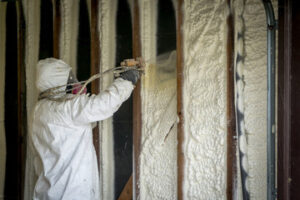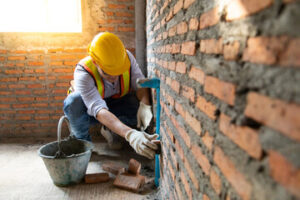Surgery is an important part of medical treatment. It may be used to make or confirm a diagnosis, remove damaged tissue, relieve pain, correct an abnormality, redirect blood vessels, implant devices and transplant tissues or organs.
The surgical profession is undergoing rapid technological transformations. It is a hotbed of innovation, as demonstrated by developments in transplantation, osteosynthesis and minimally invasive surgery, among others. For more information, Visit Our Website Here!

In minimally invasive surgery, doctors use techniques that minimize the number and size of cuts they make in your body. MIS can help you recover faster and have a smaller chance of complications or long hospital stays.
Using this approach, surgeons can perform most of the same procedures as open surgeries. But they can do it with a smaller impact on your body, less pain and fewer side effects.
Your surgeon uses tiny tools that fit through a series of small cuts or “incisions” instead of one large cut. Your doctor may also use a camera and light to see the area they’re working on.
These tools and other equipment include an endoscope (a long, narrow tube with a lighted video camera at the end) and imaging equipment that shows your surgical site on a monitor. The surgical team stays by your side to make sure everything is going well.
When your surgeon is done, they remove the endoscope and any other instruments. They may then stitch up the small incisions. You may have to stay in the hospital for a few days or longer, depending on what surgery you had and how well your body heals.
Some types of surgery, such as removing cancerous tissues or performing heart surgery, require larger incisions. Other surgeries are less invasive, such as a cholecystectomy (removal of the gallbladder) or laparoscopic hysterectomy (removal of the uterus).
As technology advances, so do minimally invasive techniques. For example, new tools are being designed that allow your surgeon to access the lower abdomen through small cuts in the rectum or stomach. This allows your doctor to treat a condition like gastroesophageal reflux disease without removing part of your belly.
Not all procedures can be performed with a minimally invasive approach, but your surgeon will tell you if you are a good candidate for this type of surgery. You and your doctor will discuss the risks, benefits and alternatives of surgery and other treatment options to help you decide what’s right for you. You’ll also learn about your hospital stay, what help you might need afterward and how to prepare for the procedure. You might also be told about a legal document called an advance directive that lets you express your wishes in case you’re not able to speak for yourself during surgery or after a medical emergency.
Minimally Invasive Surgeons
Many common surgical procedures, such as a colon resection or gall bladder surgery, can be done with minimally invasive techniques. The goal of these methods is to duplicate the effects of open surgery without large incisions, reducing trauma and speeding recovery time. These methods are used for a variety of conditions, including hernias, gallstones and cancers of the digestive tract, liver and pancreas.
Minimally invasive surgeons are specially trained in advanced laparoscopic and robotic techniques. They are skilled in using long, thin instruments and use small surgical cuts. This allows them to perform surgeries with precision and control, and reduces the amount of pain patients experience after surgery. They may also be able to perform your surgery through the mouth or rectum instead of an incision in the abdomen.
Having smaller surgical cuts reduces the risk of infection, and minimizes post-surgery pain and swelling. In addition, less trauma to the body means that a patient can return to work and normal activities sooner after the procedure.
At RWJBarnabas Health, we use less-intrusive surgical methods whenever possible to help patients recover faster. Your surgical team will evaluate your condition and medical history to determine if minimally invasive surgery is right for you.
The most important factor in determining whether you are a candidate for minimally invasive surgery is your surgeon’s training and experience. Our surgeons have extensive experience performing state-of-the-art minimally invasive operations, and we were one of the first hospitals in the nation to use dual robotic consoles in our operating rooms, which allows two surgeons to work collaboratively on complicated surgeries.
Patients with chronic pain issues, such as those with spinal cord injuries or other types of nerve damage, often benefit from minimally invasive surgery. This approach can mean that you need to take less medicine to manage your pain, allowing you to heal more quickly. It can also help you avoid complications such as blood clots in the legs, which are more likely to occur when you spend extended periods of time in bed.
Other groups that can benefit from minimally invasive surgery include those with a history of bowel diseases, such as diverticulitis or Crohn’s disease. In addition, people who want to get back to their regular routines faster can appreciate the shorter hospital stays that come with these techniques.
Preparation for Surgery
Preparing for surgery requires both physical and mental effort. Preparation helps speed recovery and reduce the risk of complications. It also helps the surgical team better understand a patient’s health and medical history. Cora Kite, a clinical nursing supervisor at MU Health Care, says there are many things patients can do to prepare for their procedure.
Patients should bring a list of medications they take, including their dosages and frequency. They should also be sure to discuss any over-the-counter or complementary medicines they are taking with their doctor. Some of these may affect blood clotting and should not be taken before surgery. A doctor will tell patients if any of their prescriptions need to be stopped or modified before surgery.
A patient should not eat or drink anything except medications with a small amount of water for 12 hours before surgery (including gum, mints and candy). This is to prevent food or fluids from entering the airways and potentially causing problems during anesthesia. Patients should also remove their nail polish and makeup and make sure they have someone to drive them home after the procedure.
The day of surgery, patients should arrive at the hospital a few hours before their scheduled procedure. They will be asked to change into a hospital gown and slippers and meet their surgical team of nurses, nurse anesthetists and surgeons in the pre-operative area.
While in the pre-operative area, the anesthesia provider will give a patient medicine that will help them sleep through their surgery and not feel pain. Some hospitals ask patients to see their primary care physician the week before surgery for a physical exam that will include a check of blood clotting capabilities and an assessment of overall health.
During this time, the patient will be able to ask questions about their procedure. They will also be able to decide what type of support they will need during and after surgery, such as help with household chores or caregiving, and how long their recovery will be. Patients can also complete Advance Directives, such as a Power of Attorney for Health Care or Living Will, during this visit.
Post-Operative Care
After surgery, every patient needs postoperative care. This may be in the form of medication, physiotherapy or day-to-day home health care. Each person’s recovery process is different and depends on the type of surgery they have undergone and their overall health. This is why it is important to follow your doctor’s instructions carefully and seek out home healthcare services for assistance if needed.
Surgical interventions are the most common and often lifesaving treatment for conditions such as traumatic injuries, cancers and cardiovascular disease. Almost 1 billion surgical procedures are performed worldwide each year. Despite the importance of these interventions, a large number of complications occur, especially during and after the operation. Complications are a leading cause of morbidity and mortality.
Patients undergoing surgery are generally hospitalized for a period of time to ensure their medical health is safe and stable. Postoperative hospital care includes a comprehensive monitoring of vital signs and the patient’s response to medications, as well as wound management and pain control. It also includes the administration of fluids and nutrition, as well as ensuring adequate blood and lymph circulation.
A complete postoperative assessment should be completed within the first hour following a patient’s return from surgery, as it provides a baseline against which subsequent assessments can be made. This should include a review of the patient’s medical history and postoperative instructions, circulatory volume status, respiratory status and cognitive state.
An individualized plan of care should be developed for each surgical patient and shared with family members. It should be reviewed at least every six hours. This plan should address the specific needs of the individual patient, including the identification of any unrecognized signs and symptoms. It should also address a patient’s ability to participate in his or her own care.
Medications may be prescribed during and after the surgery for specific purposes such as to prevent nausea or vomiting, treat pain and promote healing. Alternatively, other therapies like saline, water, controlled breathing placebo or aromatherapy can be used to reduce the need for medication and thus decrease the risk of complications.








